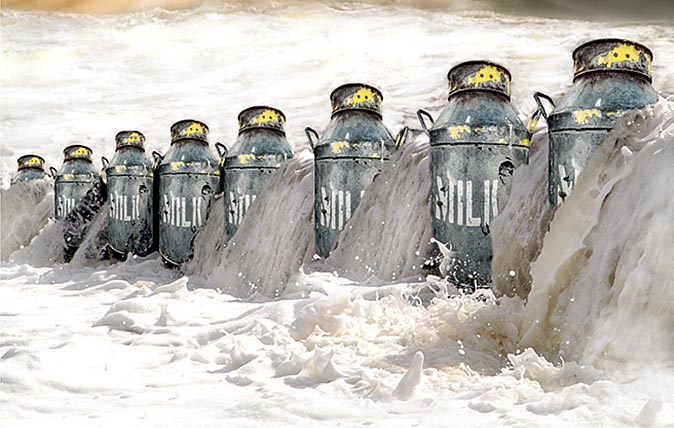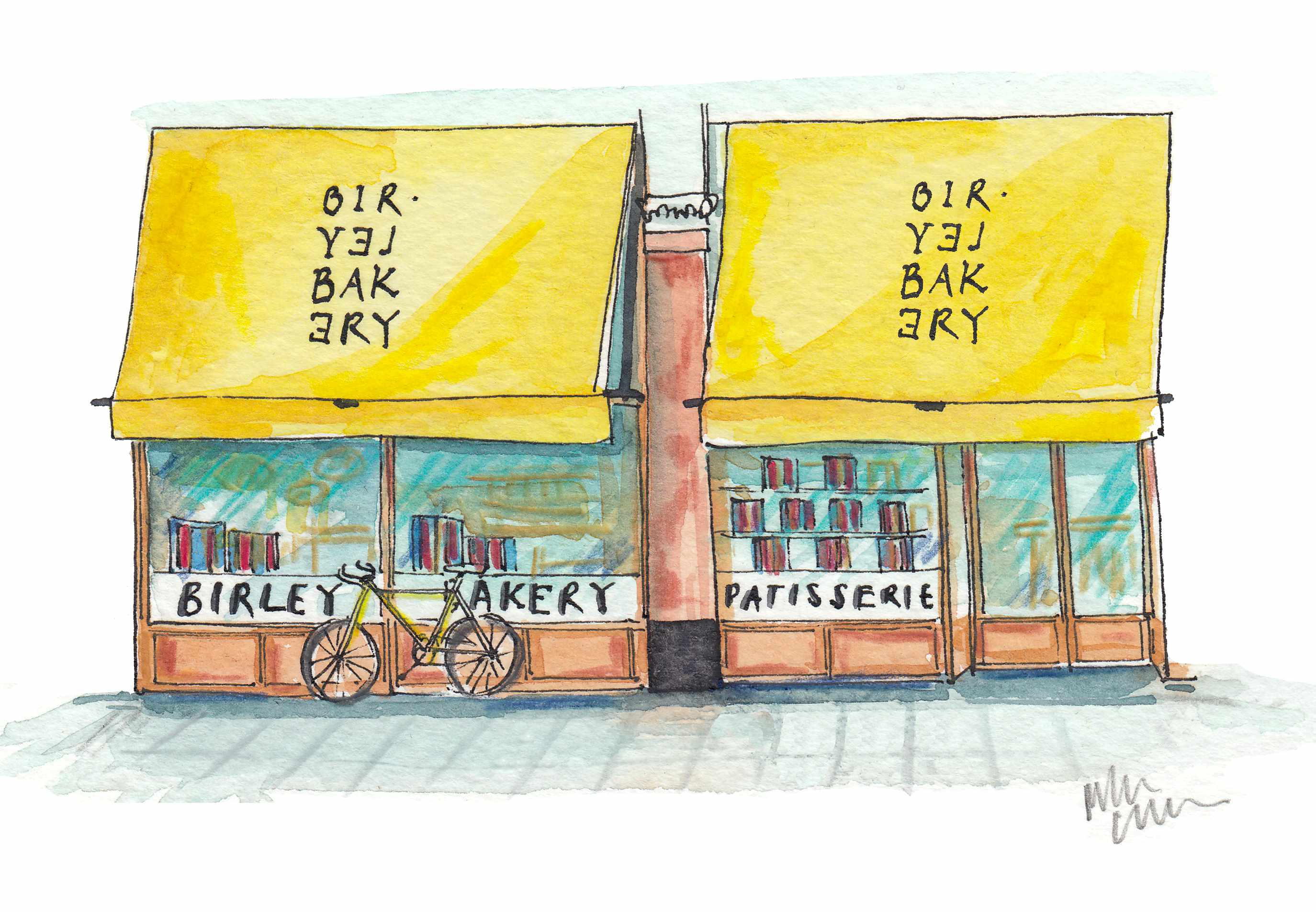Perfect storm causes milk-price meltdown
Why is the dairy industry having such a difficult time?


By Julie Harding
Although the term ‘the darkest hour’ was used by Sir Winston Churchill to describe the fall of France, it could now be applied to Britain’s beleaguered dairy industry. Farmers are experiencing price cuts for their liquid milk virtually on a daily basis, their businesses are running in the red, they’re shutting parlours at a more rapid rate than ever before and their animals face the constant threat of disease. In addition, many farmers have yet to receive their Basic Farm Pa‘yment cash lifeline due to delays by the Rural Payments Agency.
‘The industry is experiencing one of the most prolonged periods of volatility since UK milk prices converged with global prices a few years ago,’ says Judith Bryans, chief executive of Dairy UK. ‘Volatility is the new normal for the dairy sector and we must learn to deal with it better.’
Last week, the NFU predicted the closure of one in five dairy farms this year (2,000 farms) and, although the Agriculture and Horticulture Development Board (AHDB) expects the figure to be closer to one in 20, or 500 in total, this is still a sign of deep trouble.
Plummeting milk prices are the main cause of the exodus, the result of a series of calamitous factors coming together. Since the scrapping of quotas last year, any EU dairy farmer can produce as much milk as he likes, leading to oversupply in this market and globally or, as one analyst termed it, a ‘tsunami of milk’.
Russia has closed its doors to EU imports due to the Ukraine crisis, the Chinese market is slowing and worldwide good weather has hiked up production levels still further. At the end of the chain, supermarkets are using milk as a loss leader, encouraging suppliers to undercut each other.
‘British farmers have to play a waiting game,’ says AHDB analyst Patty Clayton. ‘No one knows how long the situation will take to rebalance, but there are no signs of recovery in the next six months. In the past nine months, we have seen an increase in farmers who are vulnerable [to financial problems].’
Sign up for the Country Life Newsletter
Exquisite houses, the beauty of Nature, and how to get the most from your life, straight to your inbox.
David Handley, chairman of Farmers for Action (FFA) reports receiving regular phonecalls from farmers in tears. ‘The industry is being left to die a slow death,’ says Mr Handley, who is organising a march on Downing Street on March 23 to highlight the issue. ‘We aren’t asking for money, but for a strategy.’
Joanne Jones, a Devon dairy farmer who works for the Farming Com- munity Network’s (FCN) South-West branch, has witnessed a ‘massive rise’ in calls to the charity’s helpline. ‘So far this year, I’ve had 25 new cases [in Devon] compared to 16 in 2015 and 15 in 2014,’ she reports. ‘The price I’m getting for my own milk has dropped by a third over the past 18 months. That’s less than the cost of producing it. At what point do we say that’s enough?’
She receives 21.8p per litre for her liquid milk from Arla, a fall of 11.2p since July 2014. Mr Handley says that he knows of processors paying as little as 9p per litre. ‘A young farmer rang the FFA office the other day and told us he’s now being paid 18p per litre compared to 28p per litre a year ago. He said that he’s finished.’
Industry experts admit that there are no quick fixes, but Dr Bryans believes in developing new export markets, increasing pro- motion and extending EU intervention once the current cap is reached. ‘Although we support a market-oriented industry, exceptional times call for exceptional measures,’ she comments. ‘Extending intervention would help by taking product out of circulation this spring and summer in the face of the threat posed by the continued and growing global oversupply of milk.’
Another problem is bovine TB. Nearly 36,000 cattle, including dairy cows, were slaughtered in the 12 months up to November 2015, a rise of 10% year on year. ‘TB is an absolute tragedy for farmers,’ adds Dr Bryans. ‘Although TB and volatility aren’t linked, the financial and emotional burden of the disease on top of difficult market conditions is creating real problems.’
There is one chink of light: the organic sector remains buoyant. Liquid milk prices are stable at 37p–38p per litre, partly thanks to strong export markets, and the Soil Association reports an above-average number of conversions last year.
Christine Gosling milks 114 Guernsey cows in Wiltshire and runs her farm in profit. Her raw milk is trans- formed into skimmed and semi-skimmed varieties, as well as hand-made butter, at her family’s processing plant. ‘If you have a quality product, an available market and can sell profitably, you can trade in profit and that is what we’ve been able to do,’ she says.
Breakdown of an industry
1945 Friesian cattle, with their higher milk yield than native breeds, begin to dominate and mechanised parlour milking transforms the industry
1947 The Agriculture Act conditions postwar policy. The Government subsidises shortfalls between farmers’ income requirements and the market price for food 1952 Foot-and-mouth disease (FMD) breaks out and lasts until 1954. (There are only two FMD- free years between 1922 and 1967)
1954 Food rationing ends. Adults had been restricted to three pints of milk a week since the Second World War 1963 The Common Agricultural Policy (CAP) is established, giving dairy farmers a theoretical level playing field
1967 FMD rages again, for two years
1969 Bovine TB has almost disappeared
1973 Britain joins the EEC/ Common Market and sub- sidies change to a set price on individual commodities, with the prices maintained by intervention. A butter mountain occurs
1980 The Milk Marketing Board’s (MMB) milk processing operation is made into Dairy Crest, a separate division and a buyer of last resort for all sur- plus raw milk
1984 The EU introduces quotas to cap the amount every farmer can produce
1986 BSE is first identified in cattlenearly five million are slaughtered
1987 TB outbreaks show successive annual rises, which continue today
1994 Agriculture Minister John Gummer announces the demise of the MMB via the Agriculture Act 1993. The MMB had guaranteed a minimum price to dairy farmers since 1933
1994 Deregulation takes place. In England and Wales, farmers opt for a single co-operative, Milk Marque, which is not allowed a processing facility. Scotland sets up Scottish Milk and Northern Ireland has the United Dairy farmers
1996 Dairy Crest, the processing arm of the MMB, is floated as an independent company 1998 Concerns grow over Milk Marque abusing its market power
2000 Milk Marque is dis-banded having been effectively found guilty of abusing its market power
2001 FMD hits again. It lasts 221 days, with areas of the country in lockdown and pyres of stinking, burning animal corpses, and costs £8 billion, including in lost tourism income
2002 Zenith Milk merges with The Milk Group to form Dairy Farmers of Britain, a co-operative that buys milk directly from farmers
2005 The Single Farm Payment is introduced during CAP reform, paying farmers for the land they manage rather than subsidies on production
2009 Dairy Farmers of Britain goes bust
2012 Milk Link merges with Arla Foods and Müller buys Robert Wiseman Dairies, transforming it from yoghurt manufacturer to major player
2014 UK milk production totals 14.6 billion litres, the highest figure since 1990 2015 Milk quotas are scrapped. Milk prices hit new lows and farmers stage demonstrations; Dairy Crest sells its liquid milk business to Müller
2016 Milk prices fall further, to their lowest level in living memory; badger cull to be extended across nine more counties; and producer numbers down by 293 (3%) year on year
Country Life is unlike any other magazine: the only glossy weekly on the newsstand and the only magazine that has been guest-edited by HRH The King not once, but twice. It is a celebration of modern rural life and all its diverse joys and pleasures — that was first published in Queen Victoria's Diamond Jubilee year. Our eclectic mixture of witty and informative content — from the most up-to-date property news and commentary and a coveted glimpse inside some of the UK's best houses and gardens, to gardening, the arts and interior design, written by experts in their field — still cannot be found in print or online, anywhere else.
-
 'That’s the real recipe for creating emotion': Birley Bakery's Vincent Zanardi's consuming passions
'That’s the real recipe for creating emotion': Birley Bakery's Vincent Zanardi's consuming passionsVincent Zanardi reveals the present from his grandfather that he'd never sell and his most memorable meal.
By Rosie Paterson
-
 The Business Class product that spawned a generation of knock-offs: What it’s like to fly in Qatar Airways’ Qsuite cabin
The Business Class product that spawned a generation of knock-offs: What it’s like to fly in Qatar Airways’ Qsuite cabinQatar Airways’ Qsuite cabin has been setting the standard for Business Class travel since it was introduced in 2017.
By Rosie Paterson